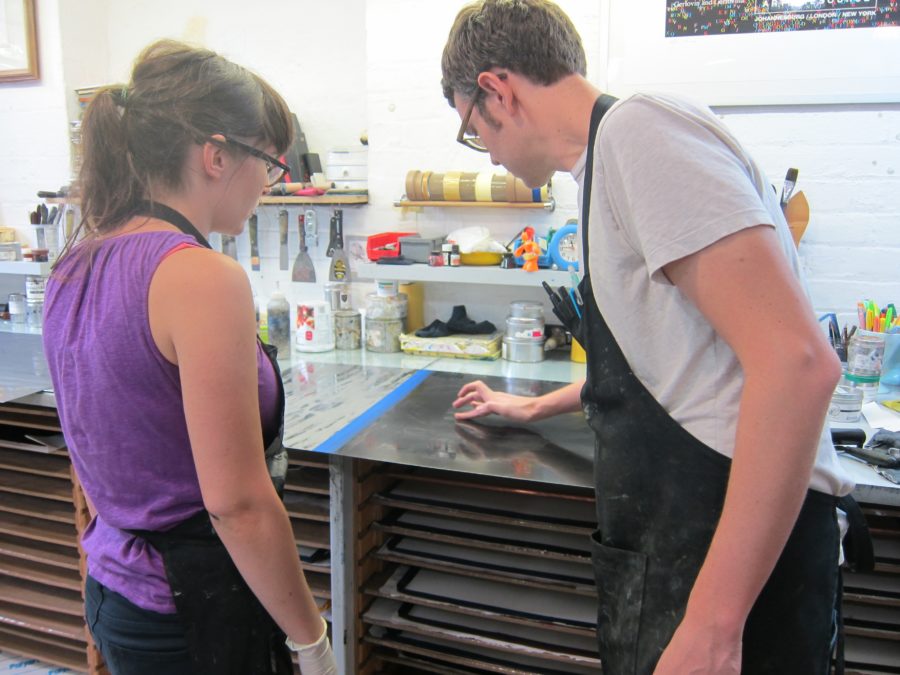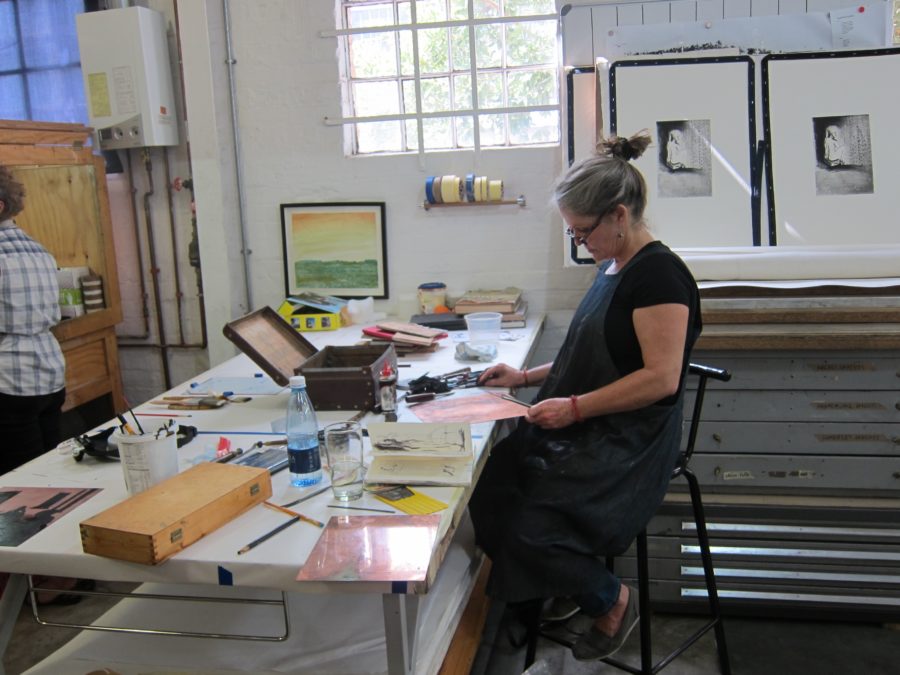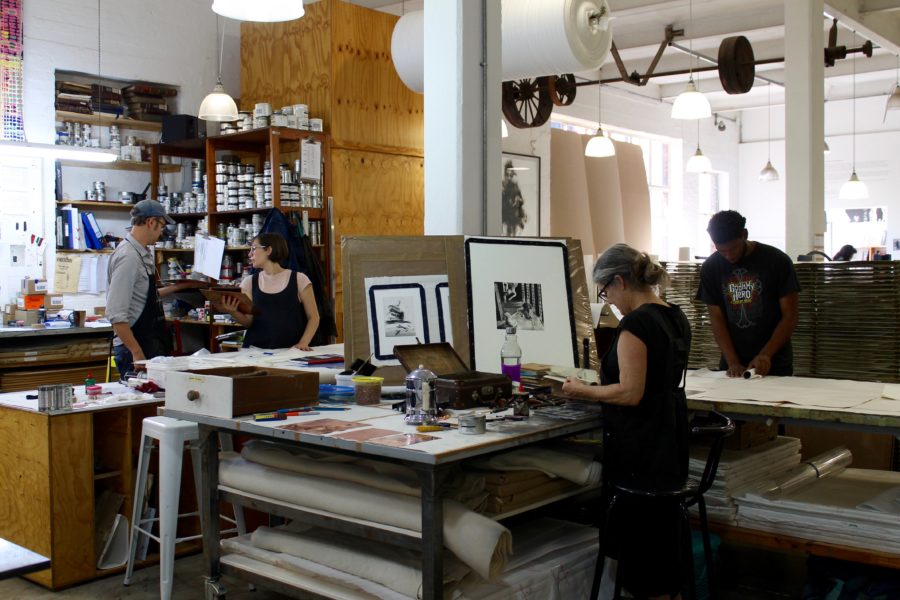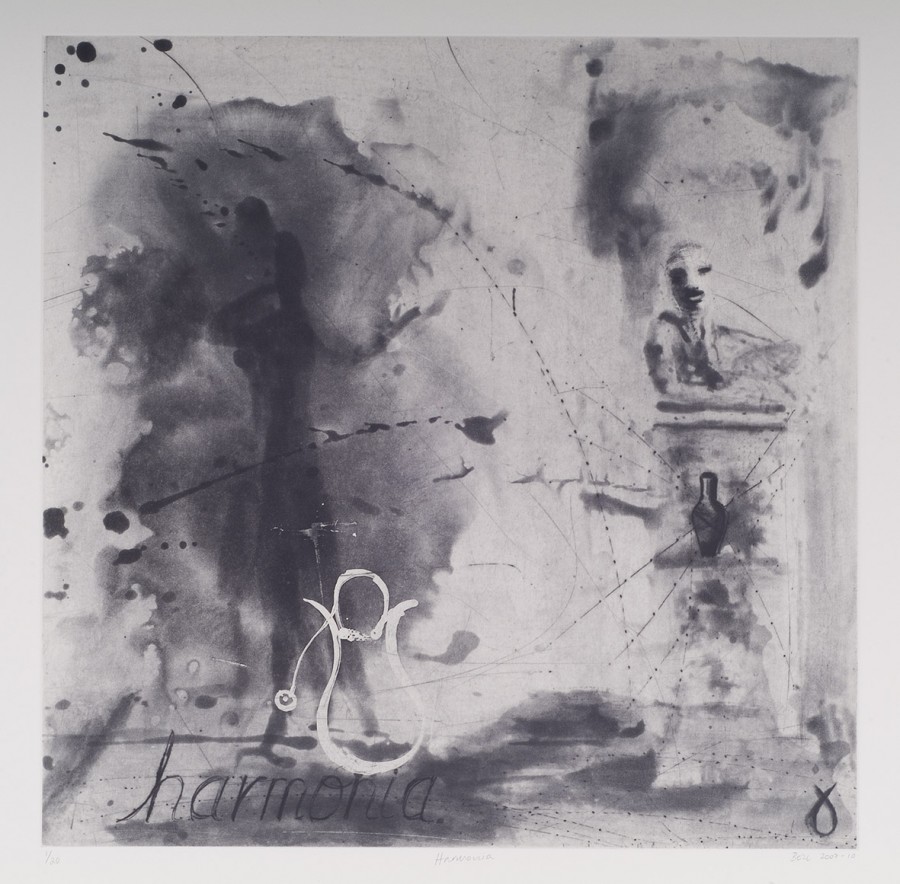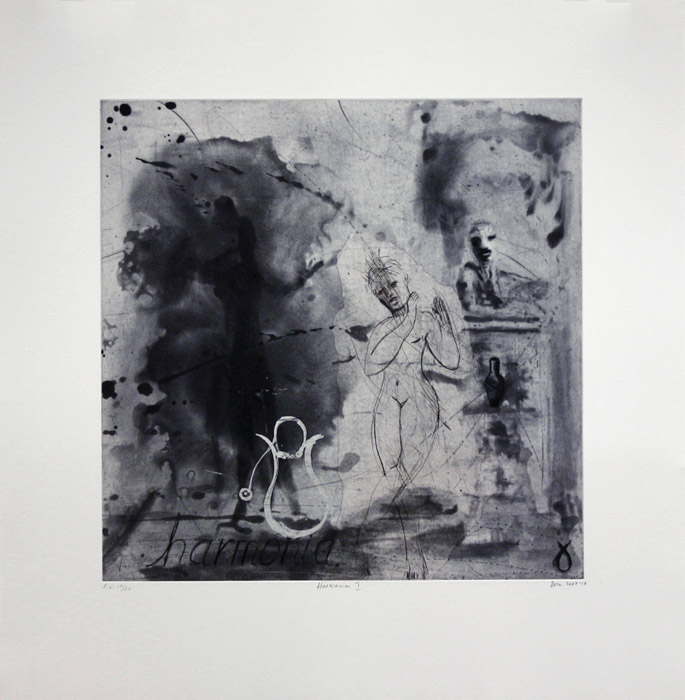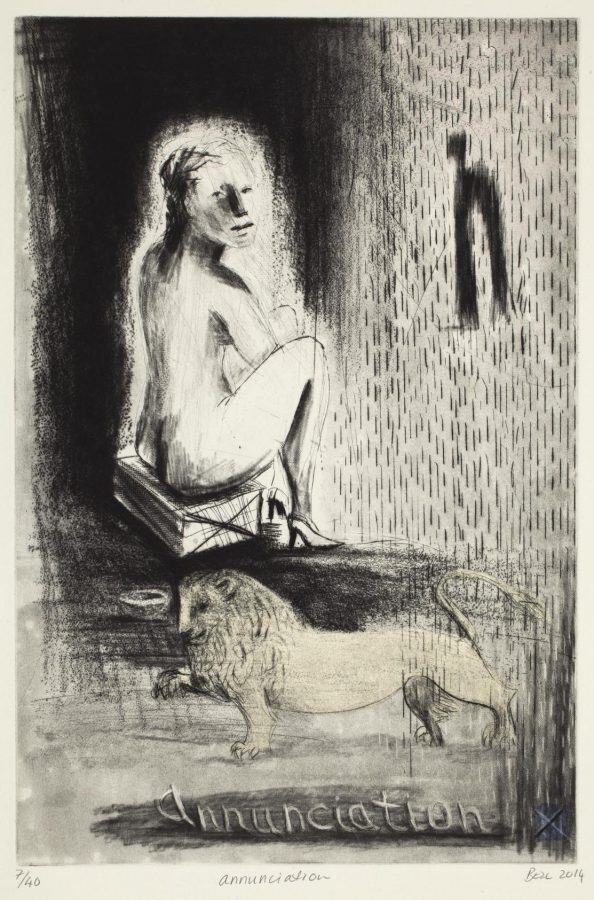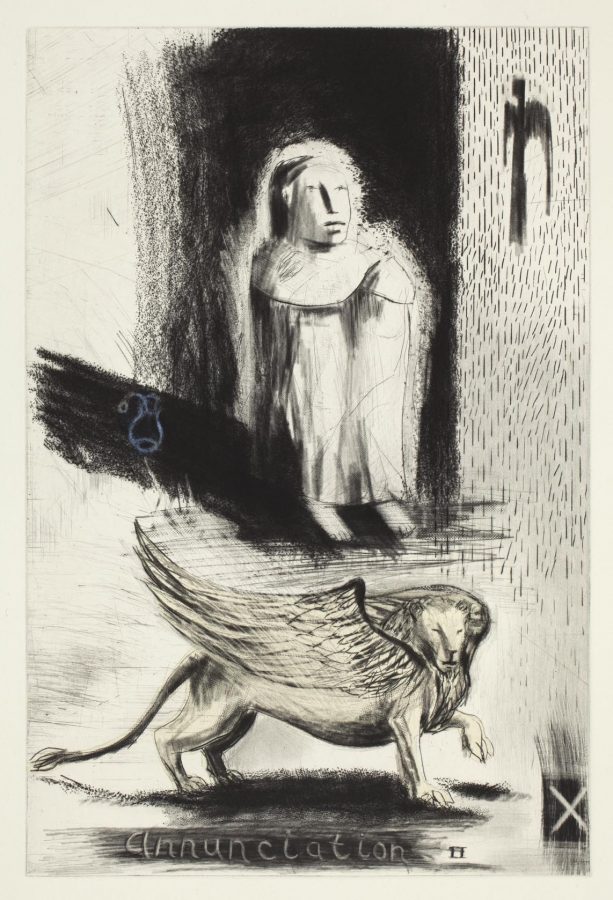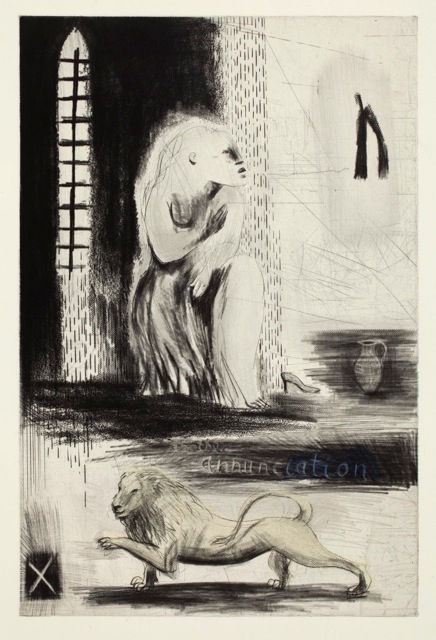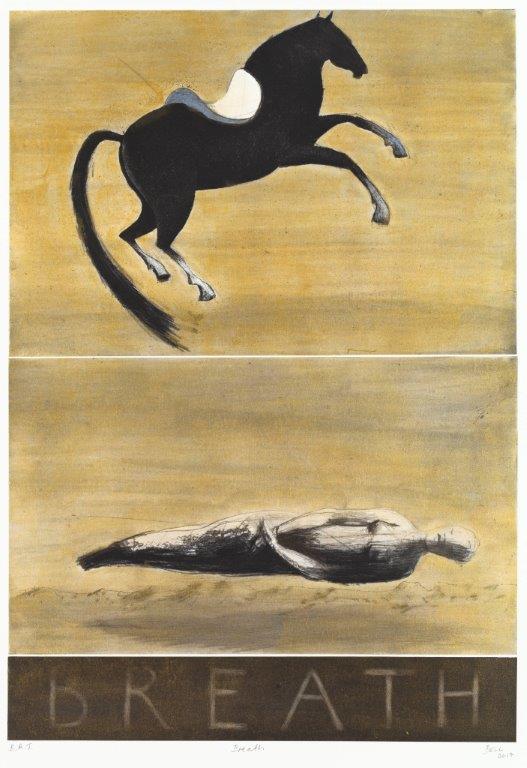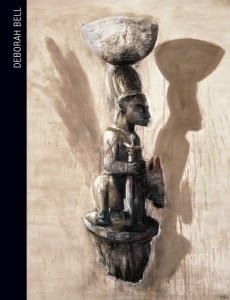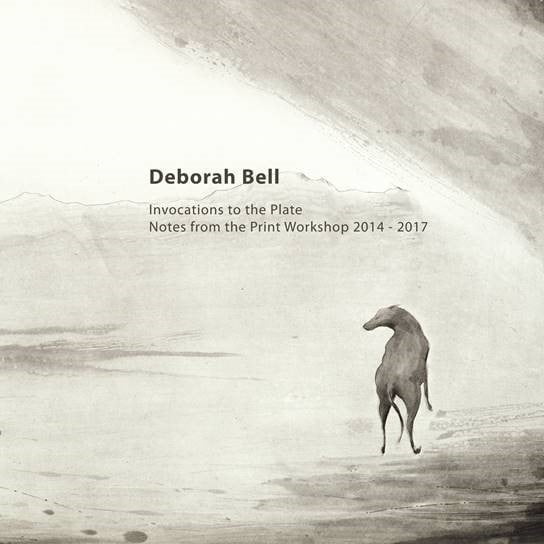Written by Danijela Cook
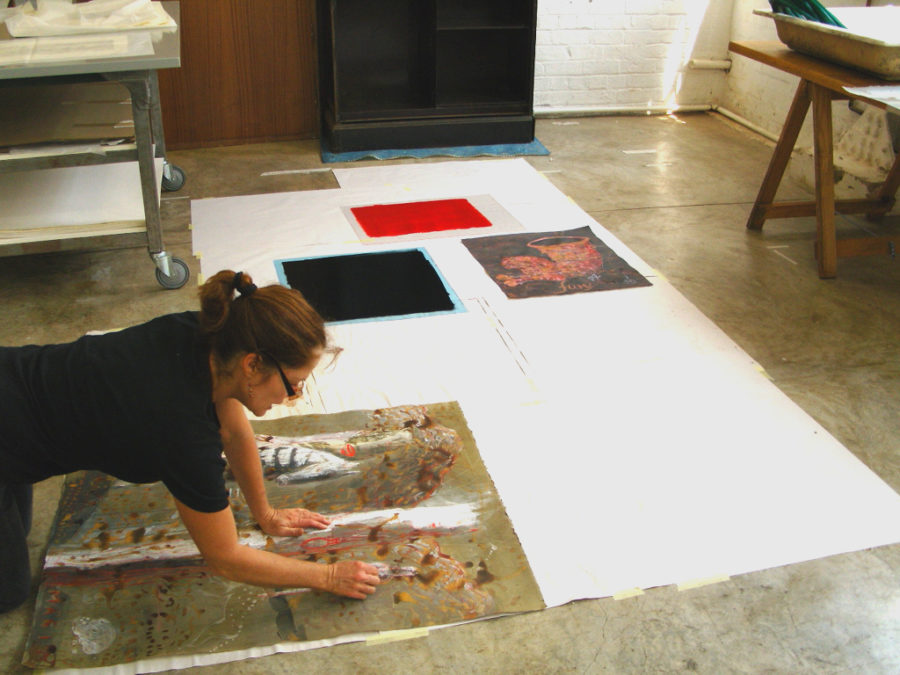
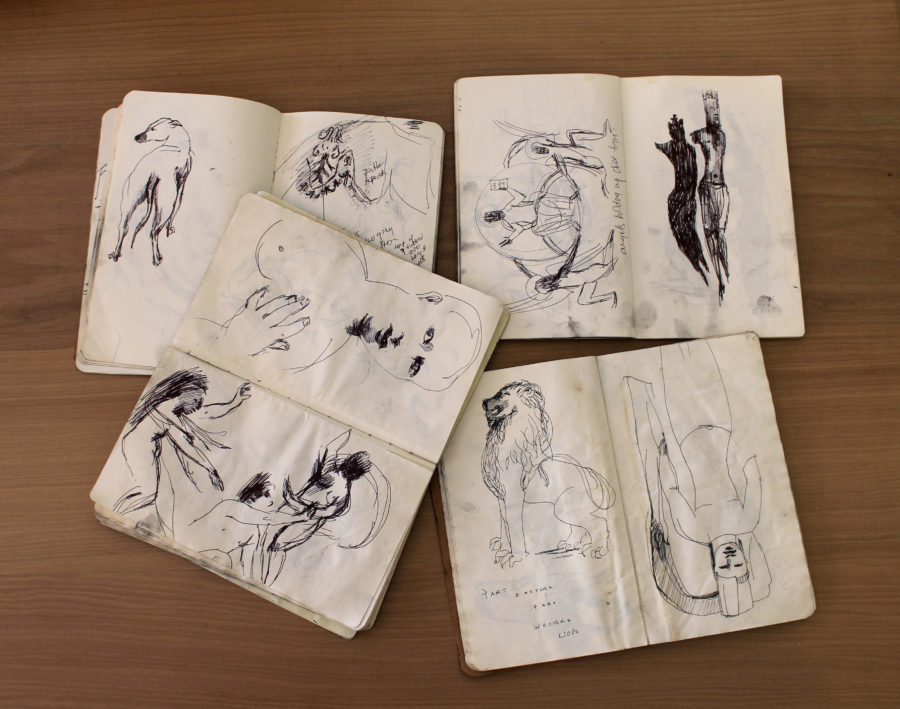
Deborah Bell began collaborating with David Krut Projects (DKP) in 2000, after her introduction to Jack Shirreff and his printmaking workshop; 107 Workshop in Wiltshire, United Kingdom. This workshop had been a hub for collaboration with accomplished international artists since 1976. Through this introduction, Bell was able to complete her first editions of large copper plate etchings published by David Krut, which she had initially started in Johannesburg.
In 2004, David Krut Publishing published TAXI-010 Deborah Bell, part of the TAXI Art Books Series – this book served as the inaugural monograph on Bell’s work, covering her accomplishments as a sculptor, painter, and printmaker up to that point. In anticipation of the book’s release, Bell had commenced collaborations with the newly established David Krut Workshop (DKW), including her work on the Ulysses series. Since then, Bell has presented several solo exhibitions with DKP and been featured in various group exhibitions as well as having two more titles published on her work and collaborations in the Workshop – Alchemy (2009) and Invocations to the Plate (2018).
“The idea of an artist as a magician delights me. It is about alchemy and the turning of base material into gold.” – Deborah Bell
Deborah Bell is celebrated for her profound connection to the core of her identity and the inner quest for self-discovery. Her practice is deeply rooted in her search for the ‘self,’ a theme that permeates through her imagery. This search goes beyond mere self-expression; it delves into the exploration of her own spirituality, her place in the world, and her understanding of her existence as an artist, particularly within the context of Africa.
Bell draws inspiration from a diverse array of spiritual imagery sourced from ancient traditions. These visual elements, culled from the depths of time, are centered around her desire to “find the worlds between”. They serve as a bridge connecting her material and her spirit – the worldly and the mythical. These messages from the realms she creates show how her practice is not just a personal exploration but a reflection of the shared human experience and the timeless questions that have preoccupied humanity for generations.
In addition to her engagement with ancient imagery, Bell’s work is also deeply intertwined with her personal memories. These memories are not just individual recollections, but they also serve as a reservoir of shared experiences, both within her own life and within the broader cultural and historical context of South Africa.



The strong collaborative relationship between Bell and DKW has resulted in a significant collection of prints by Bell, developed over the years in partnership with the late Jack Sherriff of 107 Workshop and American master printer and Director of Robert Blackburn Printmaking Workshop, Phil Sanders.
It all began when Bell had been working on large scale etchings at Artist’s Proof Studios in Johannesburg, however due to the scale of the work it proved to be quite a challenge to complete the prints. Bell had been made aware of 107 Workshop and the possibility of creating large etchings with Sherriff after William Kentridge’s visits to the workshop. In 2000, Bell took her large plates to Wiltshire where she would work with Sherriff in producing what would become Diary 3, Diary 4 and Diary 1 as well as the spontaneous and near divine Red Lion I and II.
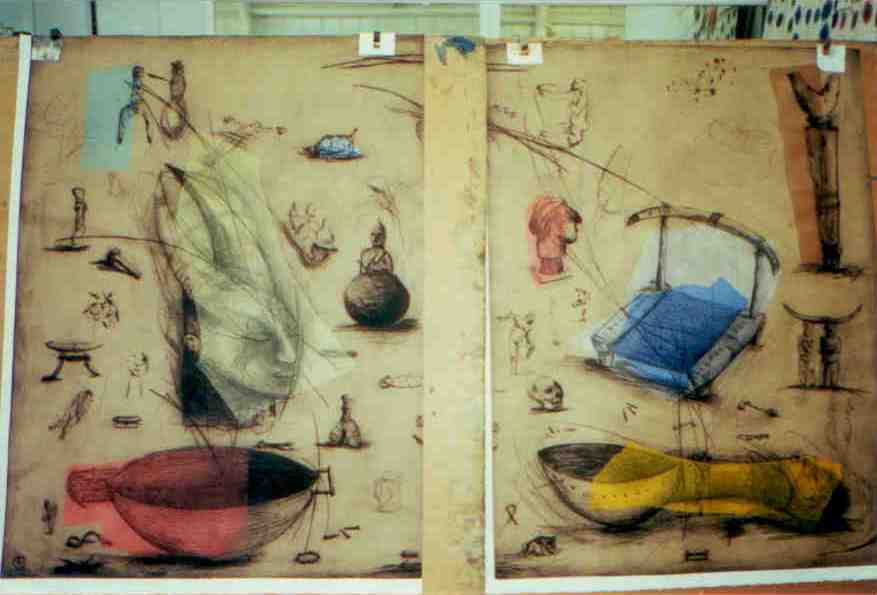


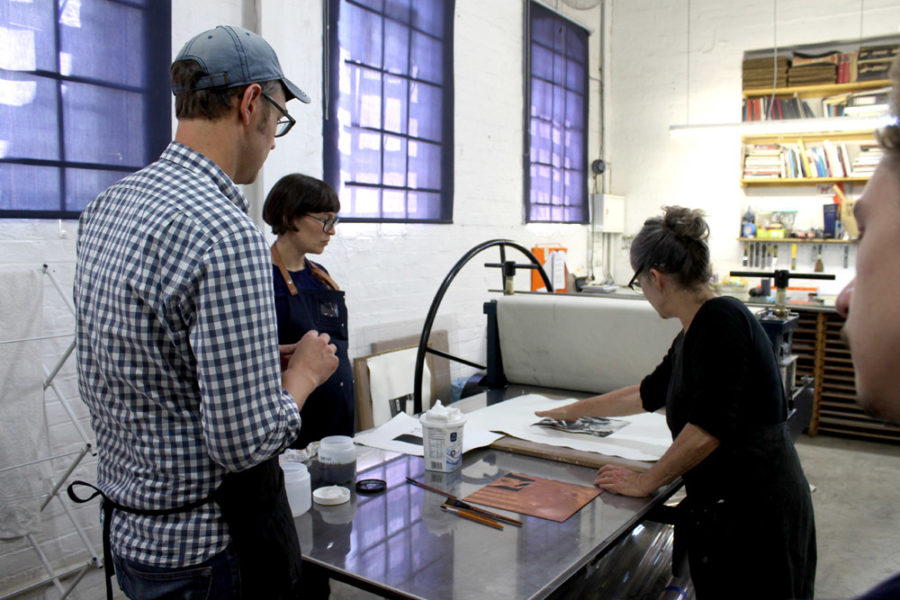
Phil Sanders has been a longtime collaborator with DKP having first visited in 2008. At the time, DKW was under the direction of Canadian born master printer, Jillian Ross who worked alongside a team of skilled printmakers. The collaborations between Bell, Sanders and DKW resulted in splendors of magnificent artworks.
In celebration of over two decades of collaboration, we reflect on three significant projects; Harmonia alongside Harmonia I (2010), The Annunciation series (2014) and Breath (2017).
The imagery in Harmonia (2010) invites contemplation of a liminal space which is possibly suggestive of the afterlife or the underworld. What remains are amorphous shapes and elusive memories of forms. This progression of the plate in Harmonia I echoes the philosophical notion of the ephemeral and transient nature of human existence.
The presence of a pot and other abstracted forms refer to ancient civilizations, notably reminiscent of Babylonian pottery and, to a degree, Abyssinian (Ethiopian) artistic traditions.
Harmonia is a monotype created through a collaborative effort between artist Bell and master printmaker Jillian Ross. The work makes use of misty and translucent spitbite marks on the plate, which were achieved through the application of nitric acid to an aquatinted plate, followed by dilution in water. This type of etching technique allows for the creation of organic and ethereal marks that create a visual environment that’s only left with vague shapes and memories – blurring the temporal with the mythical.
Harmonia I is a second iteration using the same plate that created Harmonia; however, this edition includes a layer of chine colle which allows for a deeper tonality and rich contrast. A central feminine figure has also been included, in a balletic stance, poised in liminality.
The Annunciation series was released in 2014. The series of three intaglio prints feature an angelic figure alongside a lion and other suggestive motifs. The figure of the angel in Annunciation I-III, is a striking departure from the traditional Western representations of angels. Bell’s angel adopts a style reminiscent of traditional African sculptures, giving it a distinct cultural and artistic identity. The angel is depicted seated, suggesting a sense of contemplation and patience, beckoning for a deep personal shift.
The lion, often associated with courage and strength, appears wounded. This wounded lion might symbolize the internal struggles that exist before a personal breakthrough. The contemplative angel and subversive lion encourage viewers to consider the idea of transformation, healing, and resilience. The lion’s direction shifts in each image, as if he is pacing back and forth in anxious anticipation. The angel turns, finally looking up at what has evolved from I-III from an angelic silhouette to become what mirrors a wish bone. One can hope that if a fourth image were to exist, it would show the angel in flight, on towards transcendental self-actualisation.
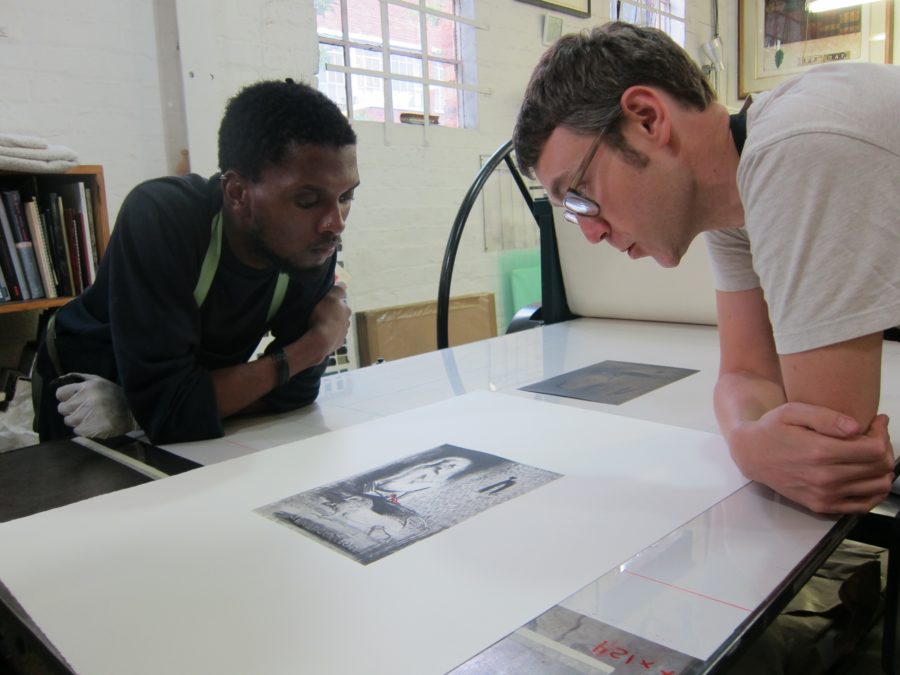
Breath portrays a composition featuring a dark horse with an unoccupied saddle above a recumbent figure. Notably, one of the horse’s hooves is adorned with a hand-painted blue hue, which resonates with the gold background that envelops the entire print. The horse and the reclining figure exist within a composition that extends expansively. However, the landscape, rather than conveying a physical realm, assumes a symbolic dimension, suggesting a spiritual plane or metaphysical space.
The title, “Breath,” directly links the artwork to the act of inhalation and exhalation. This thematic focus on breath introduces a meditative element into the work. The concept of breath serves as a metaphor for the cyclical nature of existence, with each breath representing a moment of life, more so, of living.
The vacant saddle atop the horse and the repose of the figure beneath it create a sense of absence, implying a narrative element where a rider may have dismounted or is yet to arrive, while the figure, due to its suggestive shadow below, is levitating. This imbues the artwork with an aura of anticipation, transition – a threshold between states of being.
Breath encourages a deeper exploration of metaphysical themes, inviting the viewer to meditate on the nature of presence and absence.

Bell’s art is a profound exploration of self-identity, spirituality, and the enduring echoes of ancient cultures. Her works bridge the past and the present. Bell has noted, of her practice: “The idea of an artist as a magician delights me. It is about alchemy and the turning of base material into gold.”
Her work is fundamentally informed by a personal search for the ‘Self’ and she often draws on spiritual imagery from a wide range of sources. Multi-layered references and connection to ancient sources and memories is linked to her spiritual beliefs and how she defines herself as an artist in Africa. This continuity of form and content within Bell’s oeuvre allows the possible meanings within her work to reach beyond the personal search of the artist herself.
